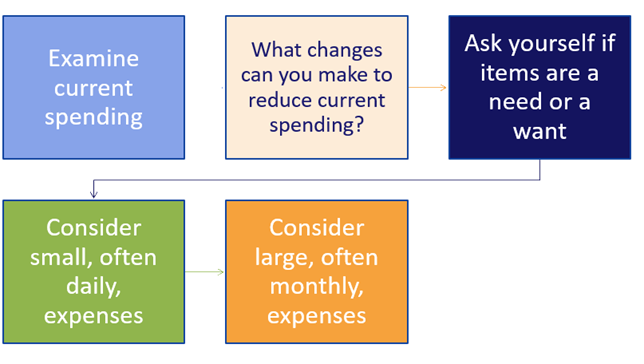Finding Money to
Save

Sponsored by
Discover and Discovery Education
Unit Overview
In this
unit, Finding Money to Save provides you with the tools and best
practices to save money, set savings goals, and grow their savings through
interest. The unit begins with an exploration of why people save money in which
you are encouraged to reframe the way you think about savingurging you to consider
it as spending in the future. You then will
learn how setting savings goals can help encourage you to save. Next, you will
learn about strategies to save more money and compare technology-enabled
services that encourage people to save.
Section A Deciding to Save Money
Why do people choose to
save money?

In this section, you will create a timeline that represents your
future and consider how you will earn and spend money 5, 25, and 50 years from
now.
People usually save for one of three reasons:
Ψ to reach a savings goal,
Ψ to be prepared for emergencies, or
Ψ for financial security in retirement.
Examples of savings goals that people might have:
Ψ Travel,
Ψ higher education,
Ψ vehicles,
Ψ homes, and
Ψ other large purchases
Young people might set money aside for unexpected car repairs,
or to repair or replace electronic devices. Saving early and often allows
students to take advantage of the power of compound interest. Compounding is
when the interest you earn from your savings and investments is
reinvestedproviding an opportunity to earn even more.
Lets
Practice
Click here to complete an activity on Future Spending.
Section B Choose
to Save

In this
section, you will focus on the reasons people decide to save money and
encourages you to develop a savings plan.
By saving money today, you can have financial security in the future.
What is
Saving?
Ψ accumulation of excess funds by intentionally spending less than
you earn
What is
Savings?
Ψ a portion of income not spent on consumption (purchase of goods and services)
Why save?
Ψ Emergency savings ΰCash set aside to cover the
cost of unexpected events
Ψ Short-term goals & expenses ΰ Pay for items that arent
part of a typical spending plan
Ψ Financial security ΰ Lower stress
How Much
Money Should Be Saved?
Ψ At least six months worth of expenses in emergency savings
Ψ Example: $2,000 monthly
expenses x 6 months = $12,000
Identifying
Money to Save

Ψ Increase income
Ψ Decrease spending
Lets Practice
Click here to complete an activity on Choose to Save.
Section C Finding
Money to Save

In this
section, you will complete a module on the principles and purpose of saving
money and provide you strategies for saving money.
Click
below to begin the module.
